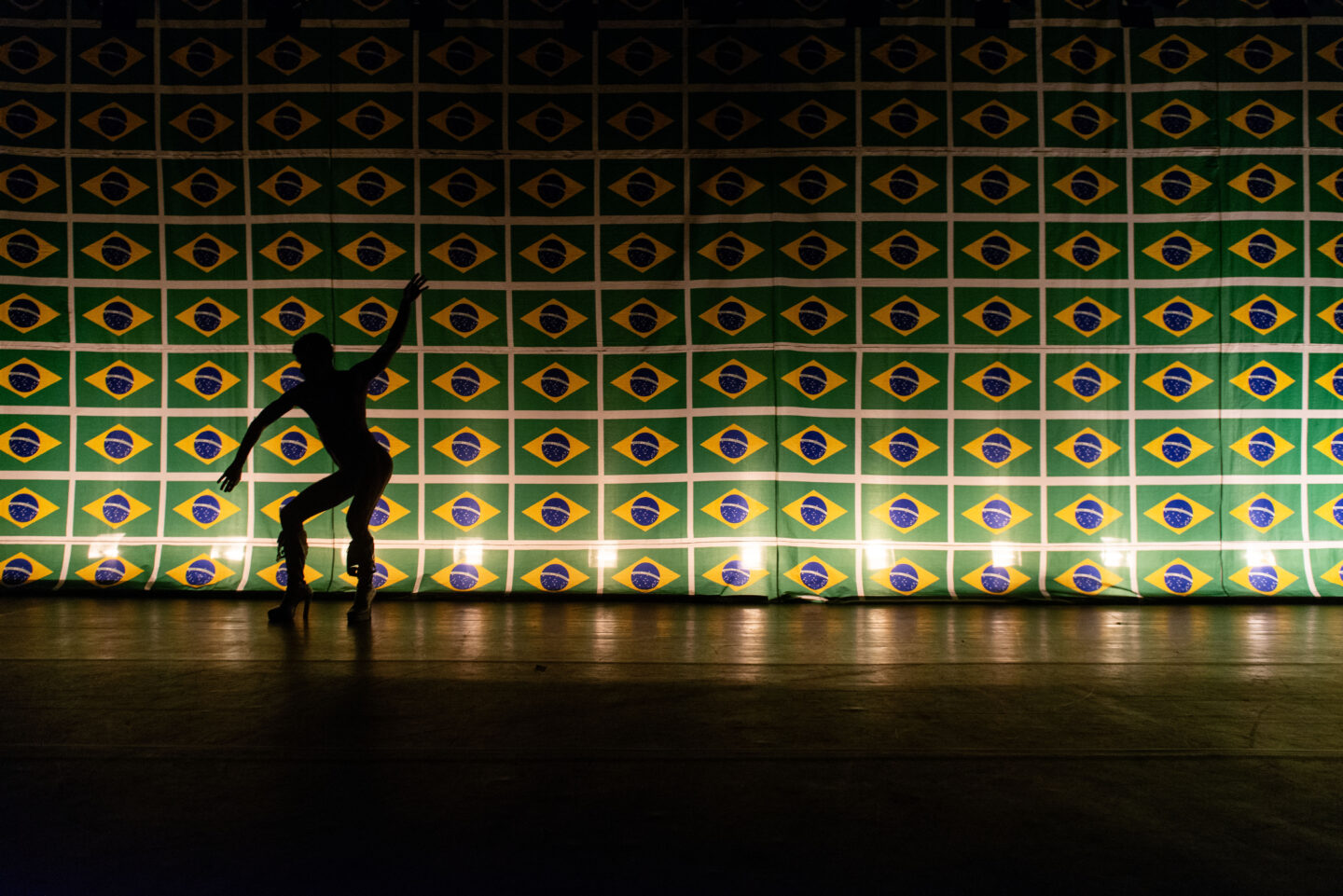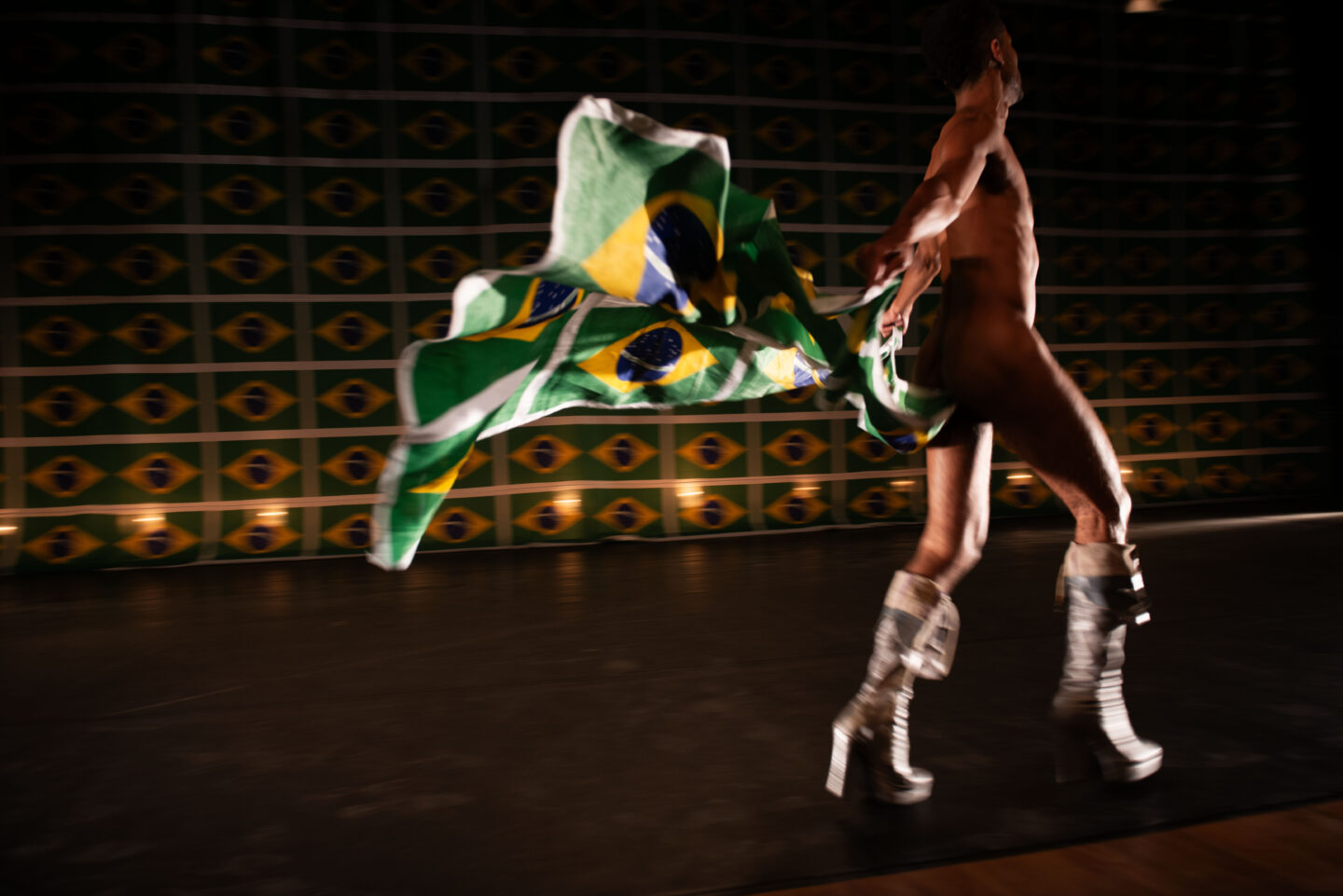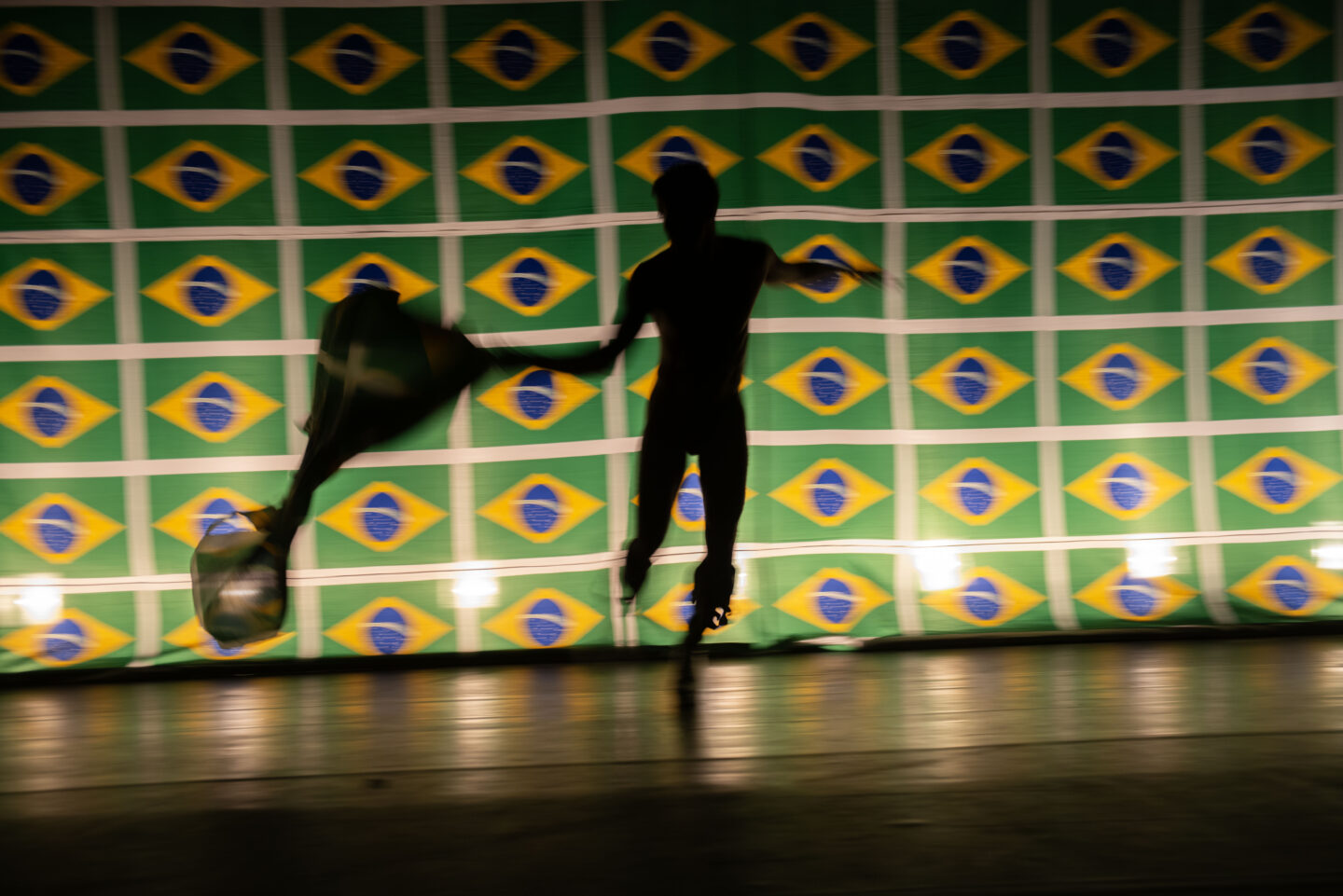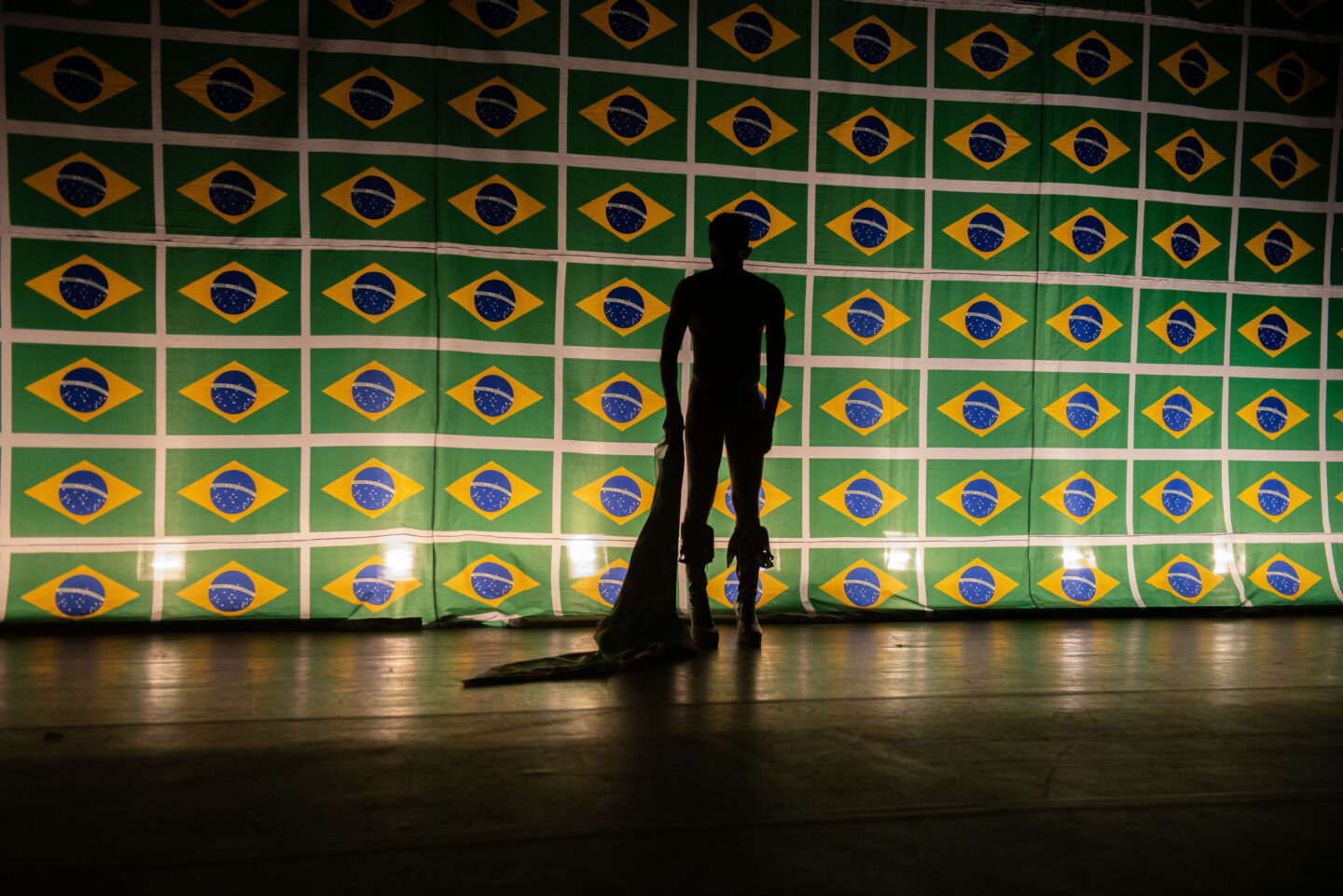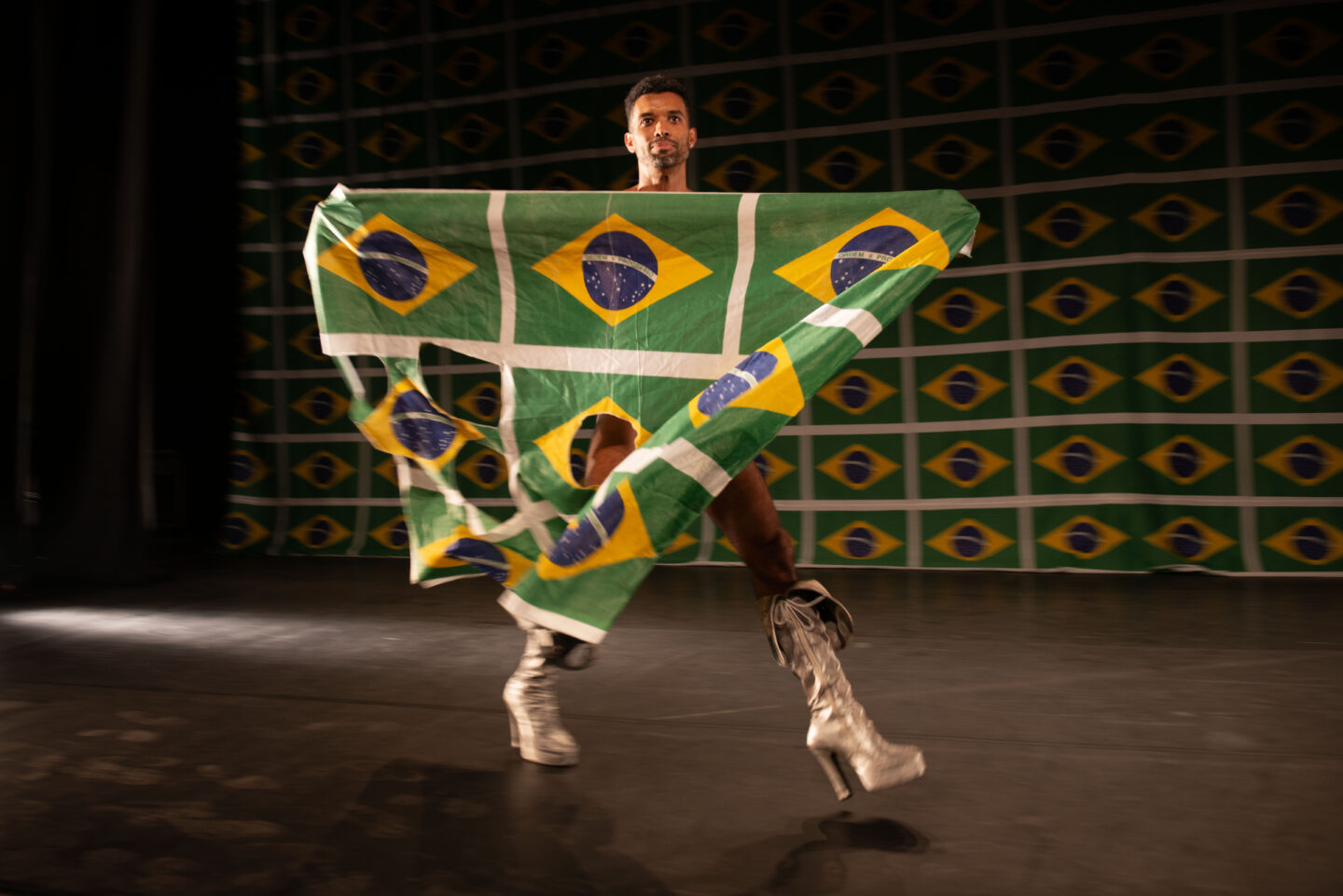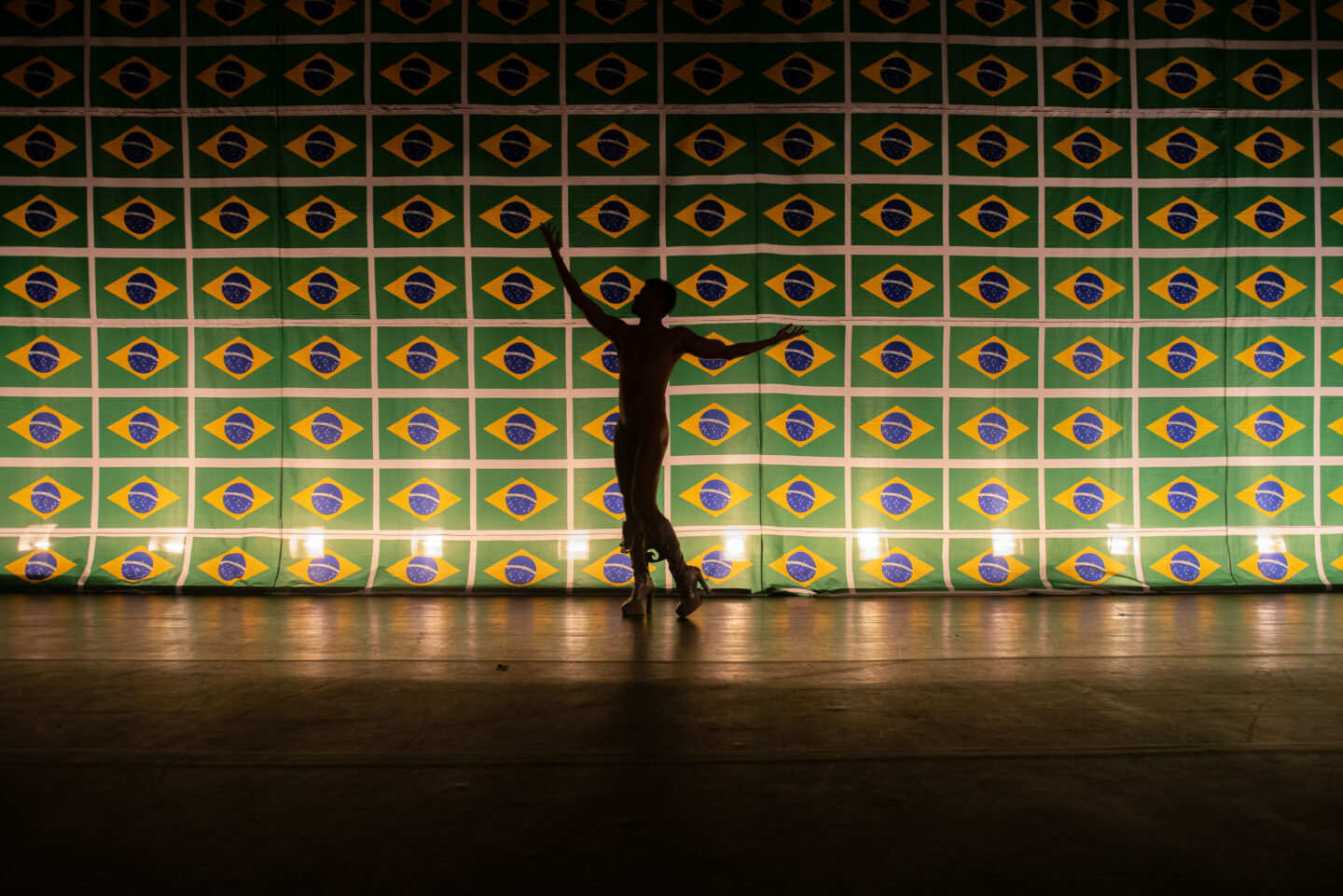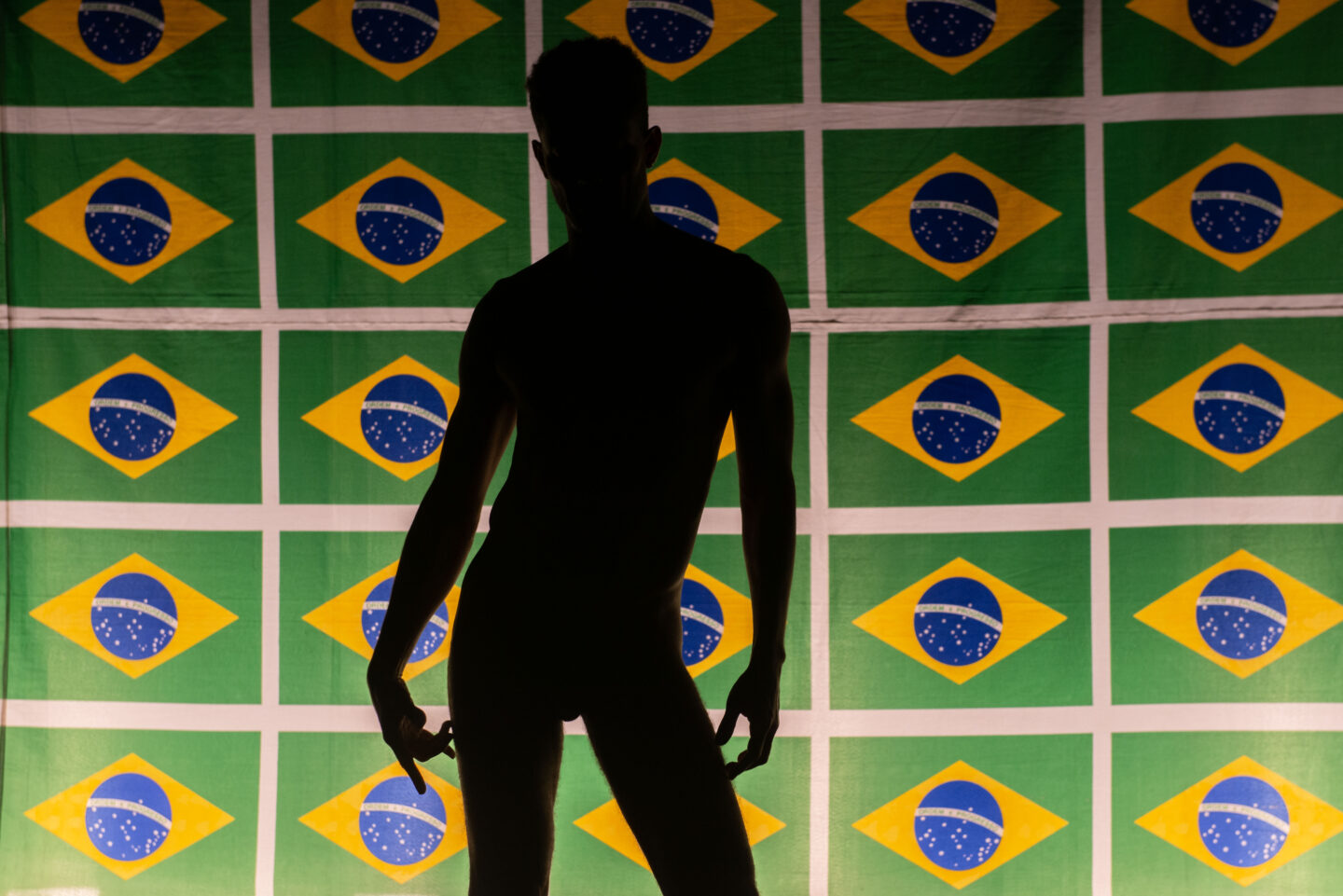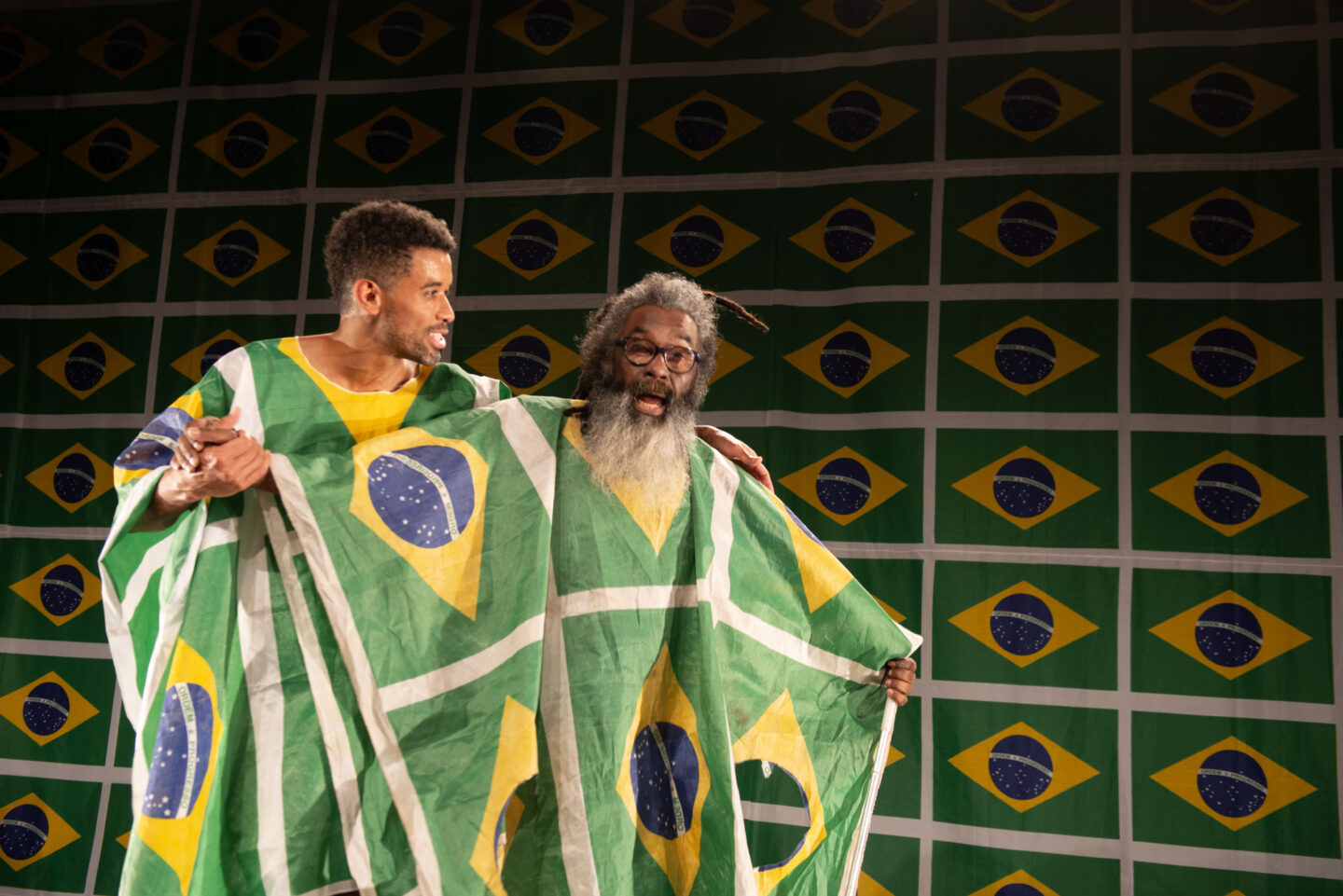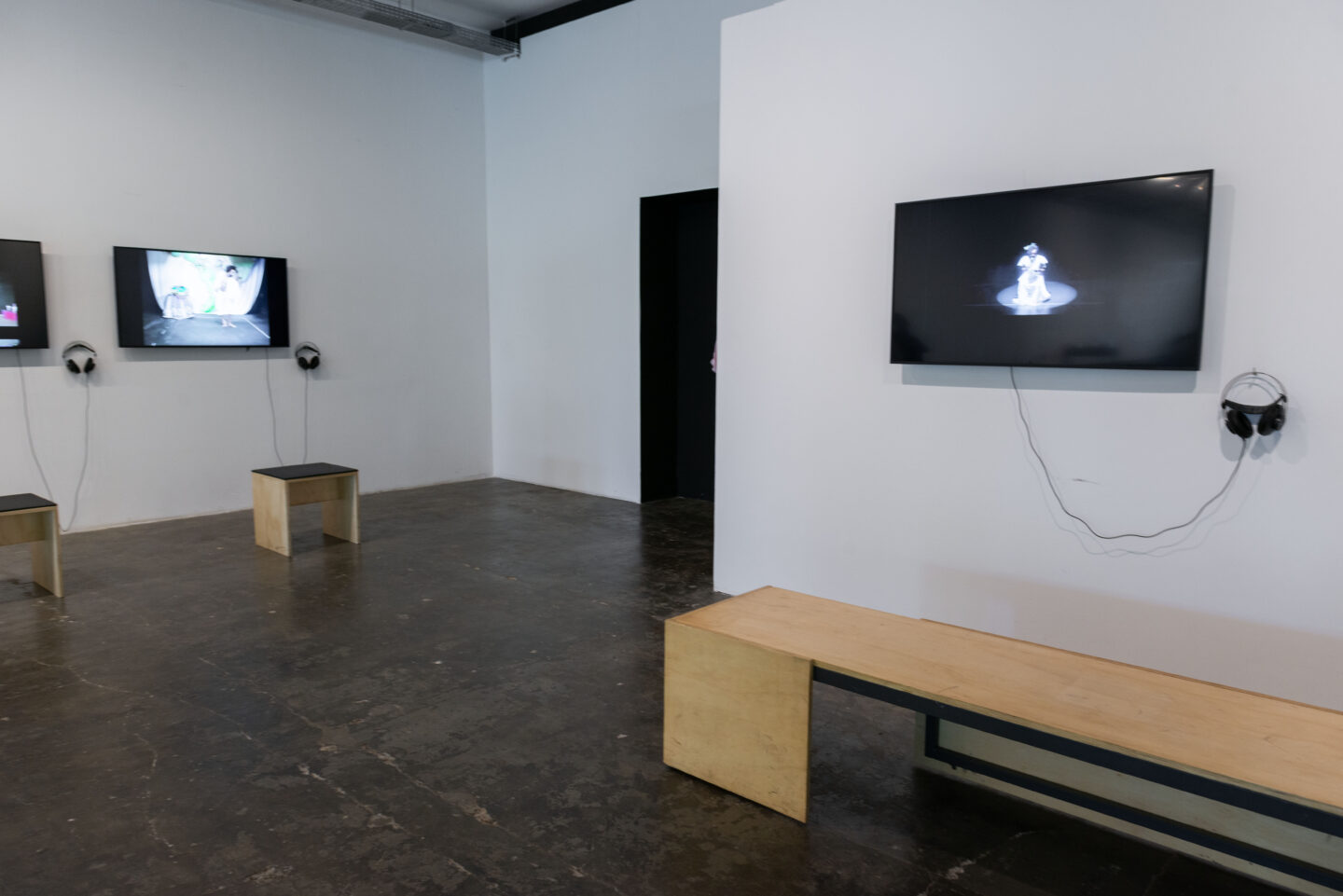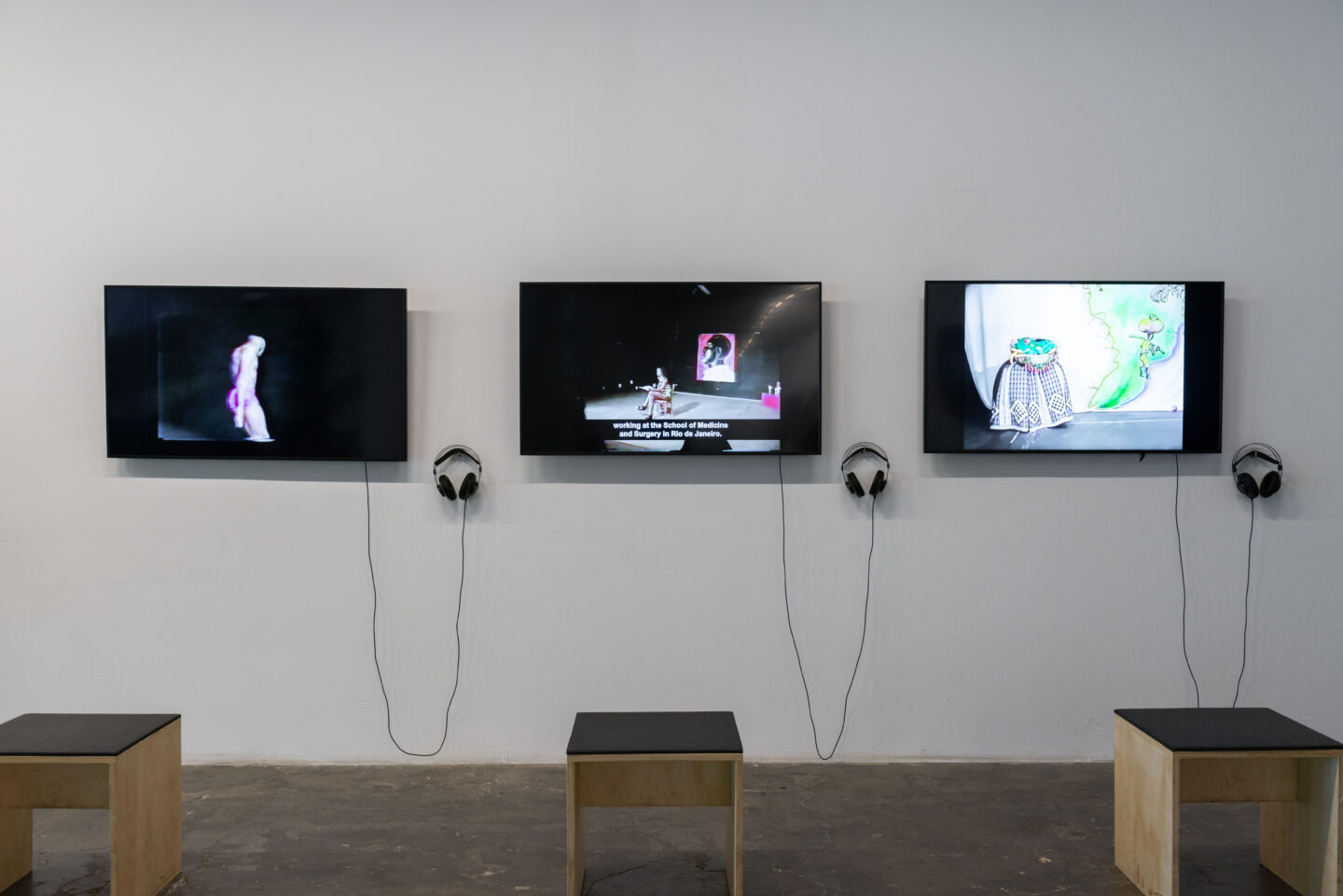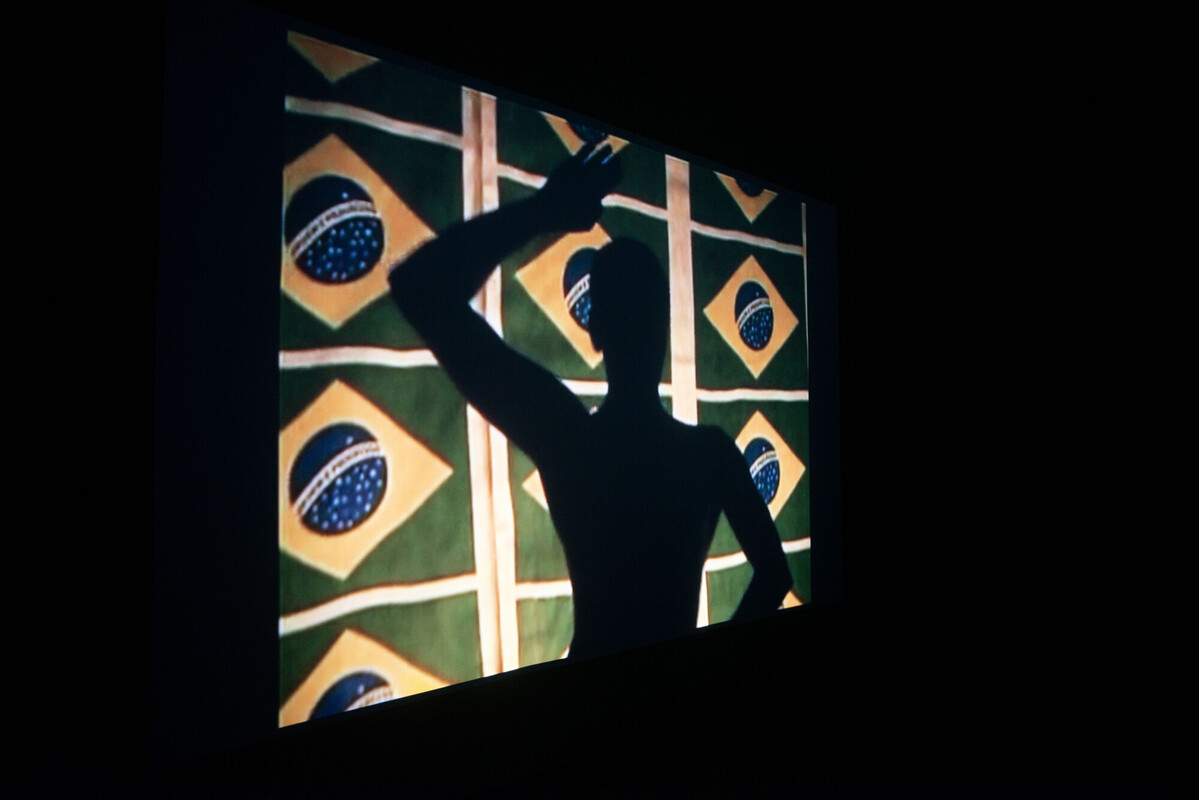
Luiz de Abreu
Luiz de Abreu’s research on dance and performance presents the black body in a state of denunciation. The videos that comprise the 35th Bienal are documents of Brazil from the mid-1990s to the mid-2000s. In them, the artist confronts the experience of a racism that resisted collective and institutional elaboration, but with poignant effects of racial subjugation on economic, sociopolitical, and subjective levels. The choreographies presumed for Black people in the context of the myth of racial democracy are explored in the artist’s work, who employs his body to respond to the stereotypes that arise and confine the expected symbolic repertoire for black arts. The country is the presence that sustains and shapes the scenes, whether as the backdrop for the set in Black Fashion (2006), as the flag that adorns the stage and the artist in Samba do crioulo doido (2004), or through classic themes of Brazilianness that form the soundtrack of the works. But, after all, how does a Black body dance? And what effects and affects can (or can’t) a question elaborated in these terms generate? Although the artist states that he does not create on the basis of genres,¹ 1 the audience’s white, cisgendered, and perverse laughter affirms comedy, as it is provoked in scenes that could cause deep discomfort if the audience were able to recognize the tragedy experienced by Black people. The performer’s laughter, on the other hand, enters and exits the scene showing choreographic marking; it is a joy that reveals its artificiality, because it is decomposed as gesture, just as all the qualities and movements attributed to the black body are. In Autópsia [Autopsy] (1997), the room for laughter has closed. In the unbearable reproduction of the horror of the reports of violence narrated off-screen, he opens a gregarious space for solidarity and for ritual, returning, perhaps, to the memory of a liturgical dimension that his dance, undoubtedly contemporary, has apprehended since the Umbanda terreiros.
cíntia guedes
translated from portuguese by philip somervell
1. According to an interview given to Rádio França Internacional Brasil, on the program RFI Convida Luiz de Abreu, on March 13th, 2020. Available at: www.youtube.com/ watch?v=g0ALs1cTW0Q&ab_channel=RFIBra – sil. Accessed on: May 18th, 2023.
- Vista da performance O samba do crioulo doido, coreografada por Luiz de Abreu, interpretada por Calixto Neto na 35ª Bienal de São Paulo – coreografias do impossível © Levi Fanan / Fundação Bienal de São Paulo
- Vista da performance O samba do crioulo doido, coreografada por Luiz de Abreu, interpretada por Calixto Neto na 35ª Bienal de São Paulo – coreografias do impossível © Levi Fanan / Fundação Bienal de São Paulo
- Vista da performance O samba do crioulo doido, coreografada por Luiz de Abreu, interpretada por Calixto Neto na 35ª Bienal de São Paulo – coreografias do impossível © Levi Fanan / Fundação Bienal de São Paulo
- Vista da performance O samba do crioulo doido, coreografada por Luiz de Abreu, interpretada por Calixto Neto na 35ª Bienal de São Paulo – coreografias do impossível © Levi Fanan / Fundação Bienal de São Paulo
- Vista da performance O samba do crioulo doido, coreografada por Luiz de Abreu, interpretada por Calixto Neto na 35ª Bienal de São Paulo – coreografias do impossível © Levi Fanan / Fundação Bienal de São Paulo
- Vista da performance O samba do crioulo doido, coreografada por Luiz de Abreu, interpretada por Calixto Neto na 35ª Bienal de São Paulo – coreografias do impossível © Levi Fanan / Fundação Bienal de São Paulo
- Vista da performance O samba do crioulo doido, coreografada por Luiz de Abreu, interpretada por Calixto Neto na 35ª Bienal de São Paulo – coreografias do impossível © Levi Fanan / Fundação Bienal de São Paulo
- Vista da performance O samba do crioulo doido, coreografada por Luiz de Abreu, interpretada por Calixto Neto na 35ª Bienal de São Paulo – coreografias do impossível © Levi Fanan / Fundação Bienal de São Paulo
- Vista da performance O samba do crioulo doido, coreografada por Luiz de Abreu, interpretada por Calixto Neto na 35ª Bienal de São Paulo – coreografias do impossível © Levi Fanan / Fundação Bienal de São Paulo
- Vista da performance O samba do crioulo doido, coreografada por Luiz de Abreu, interpretada por Calixto Neto na 35ª Bienal de São Paulo – coreografias do impossível © Levi Fanan / Fundação Bienal de São Paulo
- Vista de obras de Luiz de Abreu na 35ª Bienal de São Paulo. 08/11/2023 © Levi Fanan / Fundação Bienal de São Paulo
- Vista de obras de Luiz de Abreu na 35ª Bienal de São Paulo. 08/11/2023 © Levi Fanan / Fundação Bienal de São Paulo
Luiz de Abreu (Araguari, MG, Brazil – 1963. Lives in Salvador, BA, Brazil) began to dance in the mid-1960s at the Umbanda terreiro (Afro-Brazilian shrine), guided by his grandmother. At the age of sixteen, he joined dance academies and amateur groups. He graduated in Dance at the Faculdade Angel Vianna in Rio de Janeiro and completed his master’s degree from the Universidade Federal de Uberlândia. He has worked with different dance companies in Belo Horizonte and, in the mid-1990s, he began a solo career in São Paulo. For over forty years he has been developing dance works that deal with issues of color, race, and gender. His best known work is Samba do crioulo doido, which is currently part of the permanent collection of the Centre Pompidou (Paris, France). Abreu has performed in countries such as Germany, France, Portugal, Croatia, Cuba, Spain, England, Mali, and in various contemporary dance festivals in Brazil. He participated in the 7th Bienal do Mercosul (Porto Alegre, RS, Brazil), presented the solo piece Travesti at the 1st Mostra Sesc de Dança (São Paulo, Brazil) and participated in the 21st Bienal Sesc_Videobrasil (São Paulo, Brazil). He currently lives in Salvador, where he continues to develop his work and is pursuing a doctorate in Dance at the Universidade Federal da Bahia.

 Português
Português
